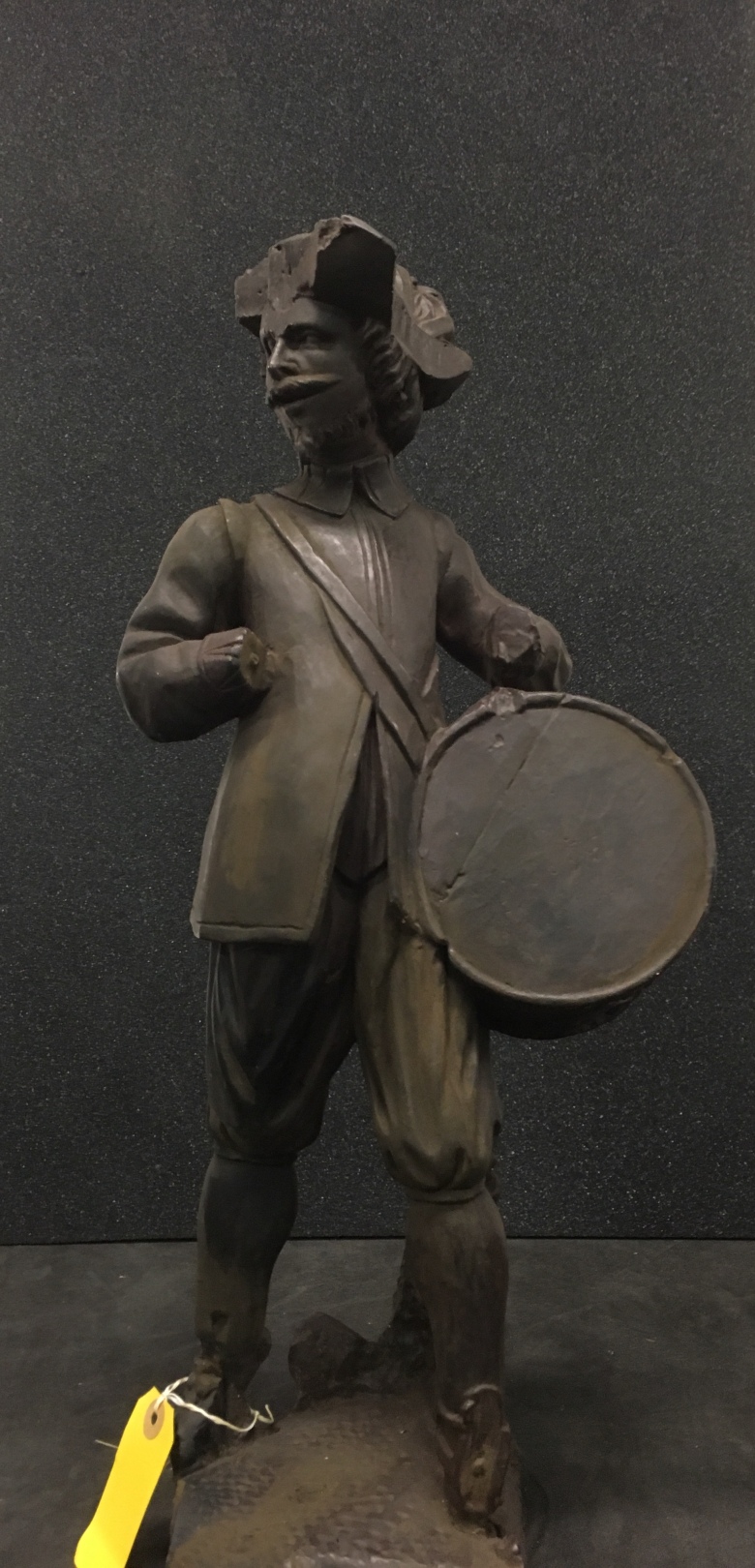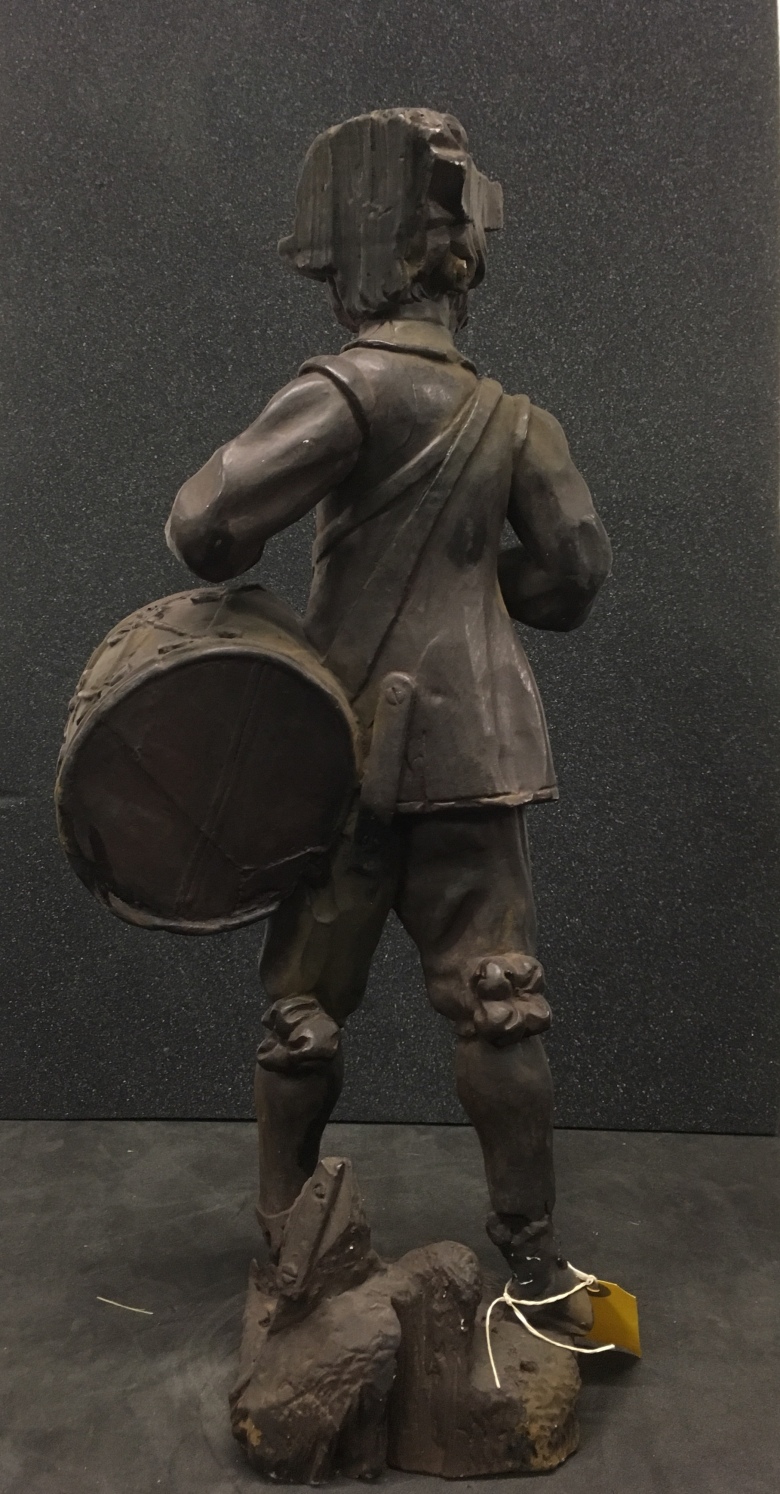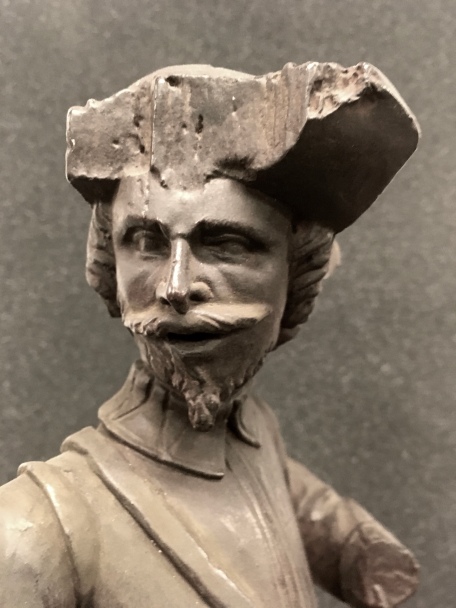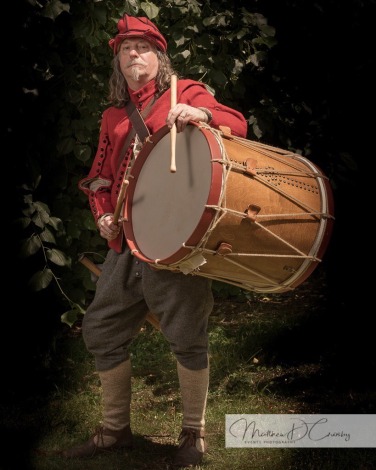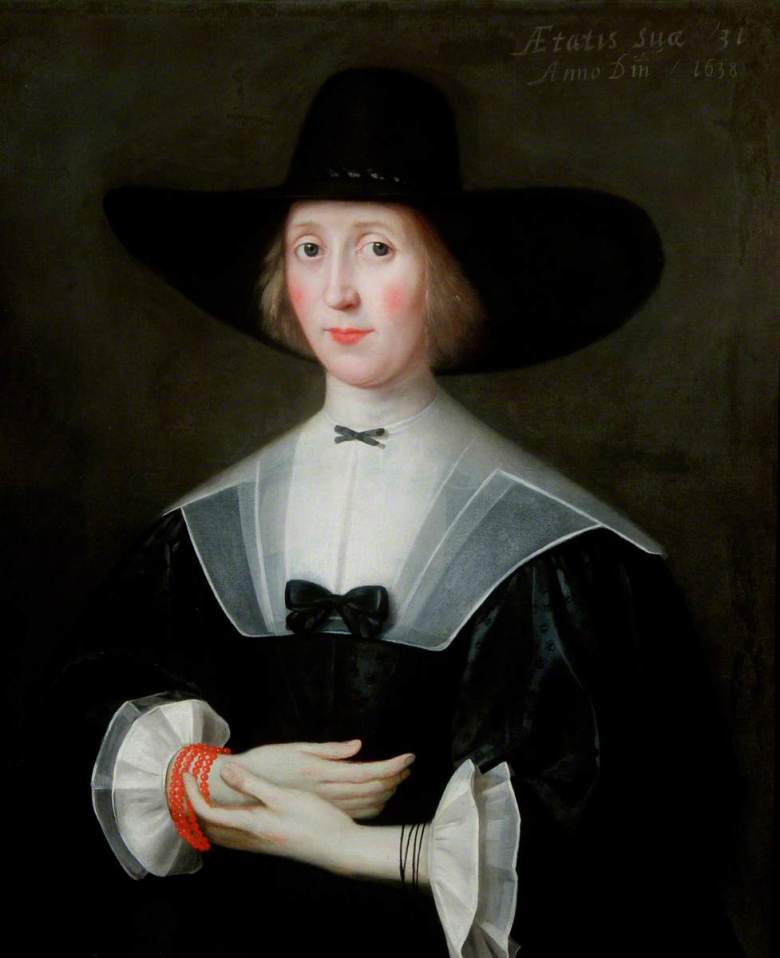Exhibiting the Pedigree of the English Gallant.
Continuing my discussion of John Bulwer’s book from 1653, I’ve skipped to the back and the appendix where as he says in the text:
“Upon the Relation of this intended Practicall Metamorphosis, I perceived that all men thought me to be necessarily ingaged to touch upon the transformation and deformity of Apparell; the thing offering it selfe so naturally, every Scene almost affording some emergent occasion or other for such a Discourse. Which conceit, I confesse, I had admitted, but that I desired to keep close to my proper Argument. A little therefore to answer expectation, I thought good to annex this Appendix, wherein I shall a little explaine this Proverbe, God makes, and the Tailor shapes.”
It’s strong stuff, but his theory seems to be that whatever strange fashion had been thought up in England, there was a foreign country where it had already been thought of. For instance painting your face, using beauty patches and wearing large earrings.
His captions, not mine by the way, They’re not terribly PC, but then neither is most of this book. The chap with the earrings has also waxed his moustache I suspect and is wearing a smart linen band over his doublet.
He compares slashed doublets (nice 1630s style one in the woodcut) to tribesmen in Africa who use body scars as a tribal marking, and goes on to discuss the mid seventeenth century lowering of the waist line

“When we wore short-wasted Doublets, and but a little lower than our Breasts, we would maintaine by militant reasons that the waste was in its right place as Nature intended it: but when after (as lately) we came to weare them so long wasted, yea, almost so low as our Privities, then began we to condemn the former fashion as fond, intollerable, and deformed, and to commend the later as comely, handsome, and commendable.”
This all sounds very familiar, fashion seemed to change as much then as it does now.
Then he moves on the the ladies. He’s no less scathing, and yes those are boobies (low cut bodice, nicely dressed hair):

“That upstart impudence and innovation of naked breasts, and cutting or hallowing downe the neck of womens garments below their shoulders, an exorbitant and shamefull enormity and habit, much worne by our semi-Adamits, is another meere peece of refined Barbarisme, as if it were done in designe, as one saith, whose thoughts were neare upon contemporary with my conceit, to facilitate an accommodation with those American Ladies in the Court of King Atabiliba,or Pocahuncas “
My favourite part still is the shoes, but I will leave that for another post.

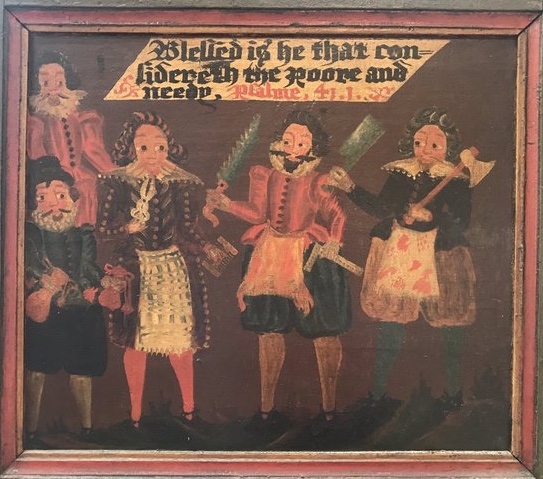

 Yet another of the figures carved by an unknown craftsman in (we think) 1636 or 37 and preserved in plaster in the Royal Armouries museum. This appears to be a young lad playing the fife, though part of his instrument has disappeared. He wears a short coat with plain shoulder wings, plain linen cuffs and a small linen band on his shirt. He’s also wearing a brimmed felt hat on his head.
Yet another of the figures carved by an unknown craftsman in (we think) 1636 or 37 and preserved in plaster in the Royal Armouries museum. This appears to be a young lad playing the fife, though part of his instrument has disappeared. He wears a short coat with plain shoulder wings, plain linen cuffs and a small linen band on his shirt. He’s also wearing a brimmed felt hat on his head. From the front we can see his coat is unbuttoned at the bottom and that he has pulled his shirt out in a fashion you can see in some high status portraits from the time. He’s been given a plain shoulder belt for his sword and some latchet shoes tied with a ribbon
From the front we can see his coat is unbuttoned at the bottom and that he has pulled his shirt out in a fashion you can see in some high status portraits from the time. He’s been given a plain shoulder belt for his sword and some latchet shoes tied with a ribbon
 From the rear you can see the decorative knot that he’s tied in his garters.
From the rear you can see the decorative knot that he’s tied in his garters.

 Continuing the series of figures that used to adorn the staircase of the house that was once known at Cromwell house in Highgate in London we have this fellow, carved we presume like the stairs in 1636 or 37. The original carvings have disappeared, but they live on as plaster casts in the Royal Armouries stores where I was given access to take photos. Hitherto they have only been visible from one or at most two angles but as we have seen so far, viewing the whole figure throws up all sorts of interesting details, not least this chap. He is quite sad now, having lost grip of his musket (and some of his fingers), but the gun still survives. The front view shows his plain soldier’s coat, linen falling band, breeches, hose and latchet shoes. He is also accoutred as a musketeer with a bandolier of ‘boxes’ that carry the gunpowder charges for his musket, a sword belt and a morion helmet which we shall return to presently.
Continuing the series of figures that used to adorn the staircase of the house that was once known at Cromwell house in Highgate in London we have this fellow, carved we presume like the stairs in 1636 or 37. The original carvings have disappeared, but they live on as plaster casts in the Royal Armouries stores where I was given access to take photos. Hitherto they have only been visible from one or at most two angles but as we have seen so far, viewing the whole figure throws up all sorts of interesting details, not least this chap. He is quite sad now, having lost grip of his musket (and some of his fingers), but the gun still survives. The front view shows his plain soldier’s coat, linen falling band, breeches, hose and latchet shoes. He is also accoutred as a musketeer with a bandolier of ‘boxes’ that carry the gunpowder charges for his musket, a sword belt and a morion helmet which we shall return to presently. On his left hip hangs a simple cross hilted sword suspended on a simple shoulder belt.
On his left hip hangs a simple cross hilted sword suspended on a simple shoulder belt. Now this is interesting. In the small of his back is what would appear to be a hank of cord, neatly coiled or twisted in a pear drop shape, hanging from his bandolier. This must represent the match-cord that was used to fire his musket. As we shall see the match on his musket is represented as quite thick cord. We have wondered if the shape represents a ball that pulls easily if you need another piece to replace a burned down match in the heat of battle?
Now this is interesting. In the small of his back is what would appear to be a hank of cord, neatly coiled or twisted in a pear drop shape, hanging from his bandolier. This must represent the match-cord that was used to fire his musket. As we shall see the match on his musket is represented as quite thick cord. We have wondered if the shape represents a ball that pulls easily if you need another piece to replace a burned down match in the heat of battle? On his left side you can see the bullet bag on his bandolier and nice detail of his shoe ties, which are just plain laces unlike the fancy rosettes on the drummer we looked at earlier.
On his left side you can see the bullet bag on his bandolier and nice detail of his shoe ties, which are just plain laces unlike the fancy rosettes on the drummer we looked at earlier.






 Continuing the series of figures that originally adorned the staircase at Cromwell House in Highgate, here’s an interesting fellow. I’m presuming he was a pikeman as his polearm was probably snapped off early in his life as a newel post, but you can see where it would originally have fitted into his right hand gauntlet. He carries a shield in his left hand and is wearing a morion on his head, adorned with a jaunty feather.
Continuing the series of figures that originally adorned the staircase at Cromwell House in Highgate, here’s an interesting fellow. I’m presuming he was a pikeman as his polearm was probably snapped off early in his life as a newel post, but you can see where it would originally have fitted into his right hand gauntlet. He carries a shield in his left hand and is wearing a morion on his head, adorned with a jaunty feather. He also has what looks like a high, but simple linen falling band at his neck and what would appear to be the tassets that form the upper leg protection of a pikeman’s corselet peeping out from below his shield. He is wearing a tightly cut pair of breeches, fine hose and over hose on his calves and a pair of latchet shoes with generous side cut outs.
He also has what looks like a high, but simple linen falling band at his neck and what would appear to be the tassets that form the upper leg protection of a pikeman’s corselet peeping out from below his shield. He is wearing a tightly cut pair of breeches, fine hose and over hose on his calves and a pair of latchet shoes with generous side cut outs.

 Left hand side. You can clearly see the hinges that hold the tassets to his armour. Again, decorative rosettes, this time tying his latchets decoratively.
Left hand side. You can clearly see the hinges that hold the tassets to his armour. Again, decorative rosettes, this time tying his latchets decoratively.
